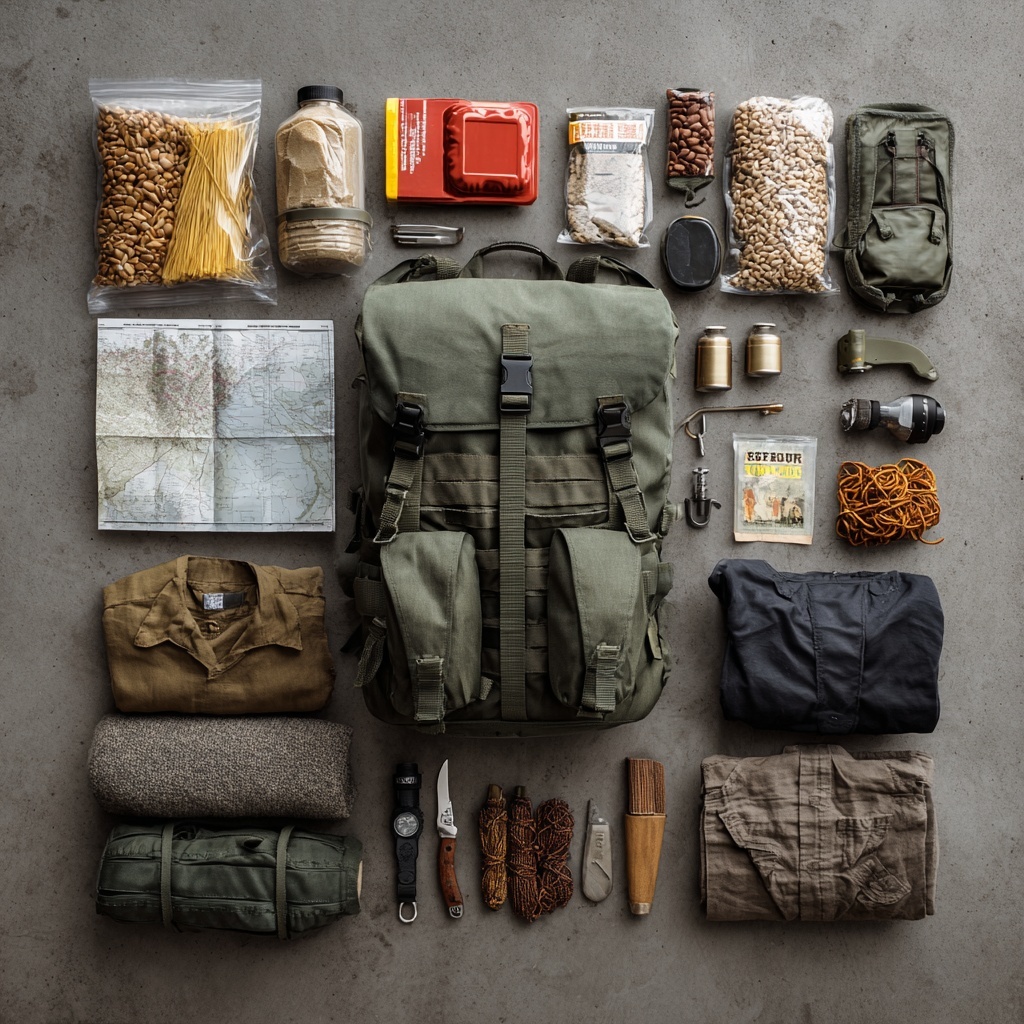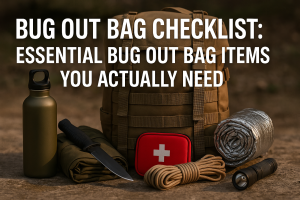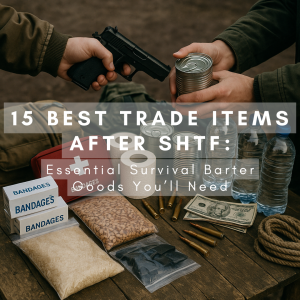Introduction to Bug In vs Bug Out
When disaster strikes, one of the most critical decisions a prepper faces is whether to bug in vs bug out. Should you stay put at home where supplies and shelter are readily available, or should you evacuate to a safer location? The answer isn’t always black and white—it depends on your environment, resources, and the type of crisis.
This article breaks down the pros and cons of each approach, explores the key factors that influence your decision, and provides practical prepping tips so you’re ready no matter what scenario unfolds.

What Does “Bugging In” Mean?
Bugging in simply means staying at home during a survival situation. Instead of evacuating, you rely on your house as your shelter, fortify it for safety, and live off your stockpiled supplies.
Advantages of Bugging In
- Familiar environment – You know your neighborhood, exits, and hiding spots.
- Access to supplies – Food, water, tools, and shelter are already at home.
- Less exposure to danger – Evacuating puts you at risk on the road.
- Better for families – Easier to manage children, elderly, or disabled members.
Disadvantages of Bugging In
- If your area becomes unsafe (flood, wildfire, riot), you’re trapped.
- Limited escape routes if conditions worsen.
- Supplies run out eventually.
What Does “Bugging Out” Mean?

Bugging out means evacuating to a pre-planned safe location such as a cabin, campsite, or hidden retreat. This often requires a bug-out bag (BOB) and transportation.
Advantages of Bugging Out
- Escape dangerous urban areas during riots, fires, or chemical spills.
- Access to safer and more sustainable environments.
- More flexibility and mobility.
Disadvantages of Bugging Out
- Dangerous roads (blocked, patrolled, or congested).
- Requires a well-stocked bug-out bag.
- Weather, terrain, and lack of shelter can make survival harder.
Key Factors to Consider When Deciding
Your choice to bug in vs bug out depends on multiple factors:
Location and Geography
- Urban areas may require evacuation during unrest.
- Rural homes with land and resources make bugging in more feasible.
Type of Disaster Scenario
- Pandemic or economic collapse → Bugging in is safer.
- Wildfire, hurricane, or nuclear meltdown → Bugging out is necessary.
Family and Group Preparedness
- Can your family travel quickly?
- Are there medical or mobility limitations?
Resources and Supplies
- Do you have enough food, water, and power at home?
- Can you sustain a long journey outdoors?

Situations Where Bugging In is Smarter
- Civil unrest or riots outside.
- Pandemics (shelter-in-place).
- Snowstorms or blackouts.
Situations Where Bugging Out is Necessary
- Natural disasters (wildfires, floods, hurricanes).
- Chemical spills or radiation leaks.
- When your home is compromised.
Building a Bug-In Survival Plan
Essential Home Preps
- At least 3 months of food and water.
- Backup power sources.
- Medical supplies.
Security and Defense
- Reinforced doors and windows.
- Community watch with neighbors.
- Home defense tools.
Building a Bug-Out Survival Plan
Choosing a Bug-Out Location
- Remote cabin, campsite, or relative’s home outside the danger zone.
Packing the Perfect Bug-Out Bag
- Food and water purification.
- Clothing, shelter, and first aid.
- Navigation and self-defense tools.
Transportation Considerations
- Fuel reserves.
- Reliable vehicle.
- Alternate routes.
Hybrid Strategy: Bugging In First, Bugging Out Later
Many preppers adopt a flexible approach—bug in as long as possible, but be ready to leave if necessary.
Common Mistakes Preppers Make
- Relying only on bugging in.
- Leaving too late to bug out.
- Not practicing evacuation drills.
Expert Tips for Making the Right Choice
- Stay updated with local news and alerts.
- Create both bug-in and bug-out plans.
- Practice with your family.
FAQs About Bug In vs Bug Out
Q1: Which is safer, bugging in or bugging out?
It depends on the disaster. Home is safer for shelter-in-place events, but bugging out is safer in fast-moving natural disasters.
Q2: How much food should I stockpile for bugging in?
At least 3 months’ worth is recommended.
Q3: What’s the most important bug-out item?
Water purification gear, since clean water is crucial.
Q4: Should I tell others about my bug-out location?
Only trusted family or group members.
Q5: Can I bug out without a car?
Yes, but it’s much harder—consider bikes or alternate routes.
Q6: What’s a good balance between bugging in and out?
Bug in as long as your home is safe, but always have a backup bug-out plan.
Conclusion: Which Option is Right for You?
The debate of bug in vs bug out doesn’t have a universal answer. The smartest preppers prepare for both scenarios, adapting based on circumstances. Bugging in works well for stability and comfort, while bugging out is essential when danger makes staying home impossible.
Your survival depends on flexibility, preparation, and quick decision-making.
🔗 For further reading on survival planning, check out Ready.gov’s emergency preparedness resources.





